Some more Wells and Springs in Cork
 cork |
environment |
opinion/analysis
cork |
environment |
opinion/analysis
 Sunday December 10, 2006 21:39
Sunday December 10, 2006 21:39 by John Baker
by John Baker

A local issue and some of its deeper implications
This is a small piece of the story of Ireland, taken on its own it is a local issue but it is being echoed right now all across the country and it raises many other issues in its wake; housing, development, local democracy, accountability, sustainability. All important and interesting but to cover all of them would make a long article so this concentrates on just one – Water, because that’s something I’m passionate about and something that is too much taken for granted in this water rich country. I trust that readers are intelligent enough to make the links.
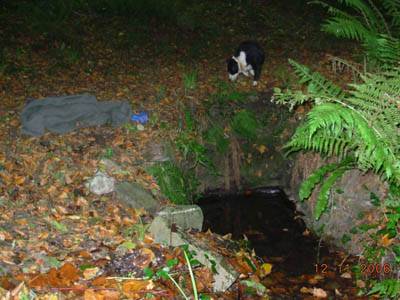
St Bridget's Well, Crosshaven
The photos tell the story. The wells shown are St Bridget’s and St Patrick’s Wells, a male and female pair near Crosshaven, Co. Cork. They are evidence of human habitation in the area going back a very long time. The existing housing development belongs to O’Flynn developments, a large property developer in the Cork area. The open field is adjacent to the existing development and is separated from St Bridget’s well by a row of mature beech trees. It is also facing a future housing development of 200 or so houses.
In recent years, Crosshaven, and neighbouring areas Carrigaline and Myrtleville have seen unprecedented growth with good quality farmland being sold for housing. I am informed that Crosshaven’s population has risen from 1500 – 5000 over the last 7 years. This type of development seems to involve getting houses up and selling them fast with little thought to quality of life in these estates nor the impact on the environment. This is not an isolated incident, yet very little thought is being given to the issue, how to counter it or what the alternatives are. Those with the money make the decisions while most of the rest of us sleep.
One group that is less comatose than the majority in this area is the Owenbue Estuary Conservation Society. They can be contacted through Brian Keating, 086 3814072. Their activities go back to the late 80s when in the field pictured some of those active in the group organised music festivals to raise awareness of large scale housing. Things have accelerated considerably since then….
Back to the wells and the water
Once they were used as a water source for many; somebody saw fit to plant an avenue of beech trees leading to them, pattern days were probably celebrated at them on the saints’ birthdays, a practice that goes back way before Christianity, (Bridget - Bride was a Celtic goddess before she was a Christian saint), there is a story of a local publican whose eye was cured by water from her well; now they are all but forgotten and face further danger from the housing estates, the pollution they bring and the alienation they are capable of breeding. Local people are also worried that if the houses are built up to the trees they too may be in danger. Is this the price of progress? Is this the progress we want? And what relevance do wells have nowadays, anyway?
Most of us probably drink treated water that has been through a variety of chemical and mechanical processes in an attempt to make it safe to drink. In many parts of Eire it has had fluoride added which is a highly toxic industrial by product. What we have forgotten is that Nature has, or had before we interfered, a highly efficient and effective means for producing high quality water called the Hydrological Cycle.
Water that has been evaporated off the sea or transpired out through the leaves of trees, carried high into the atmosphere as clouds, fallen as rain, hail or snow, filtered through rock - absorbing minerals, perhaps been stored deep underground for thousands of years and then been pushed up by geological forces, filtering through the roots of trees to emerge as a spring is likely to be far superior than anything we could hope to produce using our current technology. These springs and the rivers and oceans they feed into are the visible parts of an ancient, vast, beautiful living system that far surpasses anything we could hope to create. Perhaps given sufficient time and a willingness to learn from Nature we could learn to mimic natural processes somehow but the way we’re going at the moment we are degrading them to the extent they may no longer be able to support us. So many wells and springs and aquifers have been lost, polluted or exhausted over the last century as a result of trying to meet the needs of a rising population. We degrade nature and water and so we degrade our own bodies and our capacity to think feel and function on this planet.
Ireland is blessed with ample water supplies, we take this for granted, but how long will this last and do we have the right to be so profligate with this natural resource when people elsewhere in the world do not have enough to drink? The issue of water charges is raising its head again at home, in some parts of the world wars are being fought over water. This is a natural resource issue and just as with our gas off the west coast we are proving to be remarkably blind towards another of our valuable resources.
That’s why these little wells at Crosshaven are important, because they exist still. In another only slightly different reality they would be supplying drinking water to those housing estates, they would be recognised and valued as a legacy to be preserved and passed on to children who would have learnt how to look after their world and themselves. We don’t live in that reality right now but imagining something is the first step to making it real.
Here’s some things that could be done to bring that reality closer:
Seek out the places in your areas that you feel are important like this, wells, woodlands… anywhere the natural world and the human world touch, visit them, hang out there, sit quietly, go with friends for a picnic, value them. Damage can be done more easily when no-one cares.
Plant deciduous trees to protect water systems. Trees and water have an intimate relationship, if every river had a band of woodland either side of it, it would reduce flooding, reduce effluent runoff into the river and provide very effective wildlife corridors right through the landscape as well as lifting the water table as more water would be caught in the soil rather than running off the top of it.
Why not talk to the developers? In this case they are; O’Flynn Construction, Head Office, Melbourne House, model Farm Rd, Cork 021 4343111
ofc@oflynnconstruction.ie
www.oflynnconstruction.ie
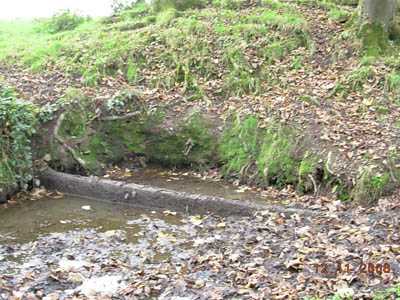
St Patrick's Well, now watering hole for cows
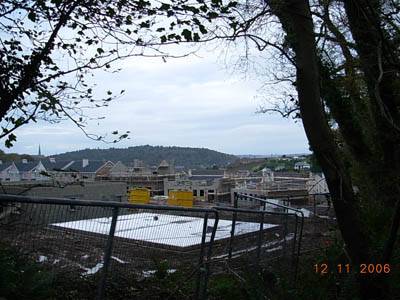
Brightwater Housing Estate, they name these places after what they damage to build them?
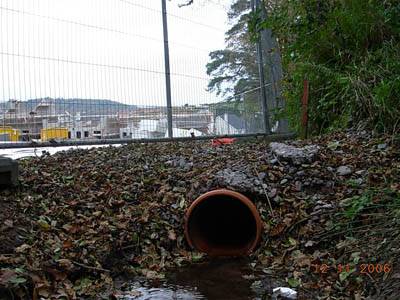
Water unceremoniously channelled down plastic pipe
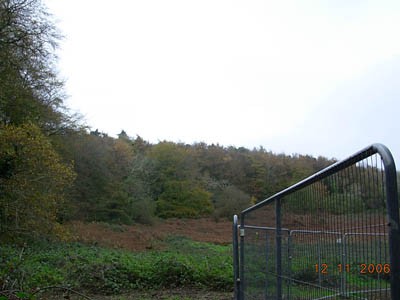
Cruachan Woods in background, field in foreground was site of music festivals now marked for more houses
 cork |
environment |
opinion/analysis
cork |
environment |
opinion/analysis
 Sunday December 10, 2006 21:39
Sunday December 10, 2006 21:39 by John Baker
by John Baker




























 printable version
printable version

 Digg this
Digg this del.icio.us
del.icio.us Furl
Furl Reddit
Reddit Technorati
Technorati Facebook
Facebook Gab
Gab Twitter
Twitter
View Full Comment Text
save preference
Comments (3 of 3)